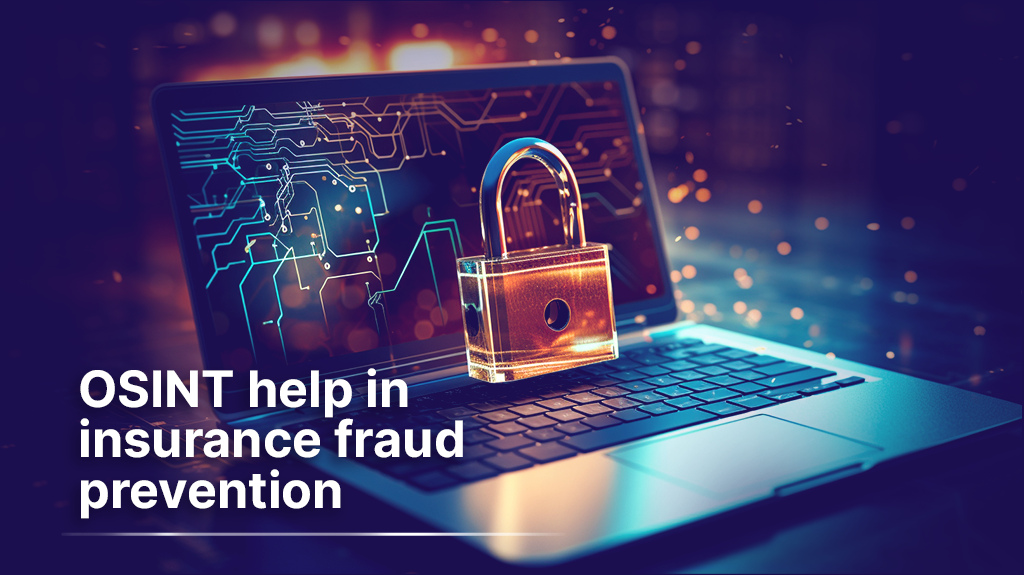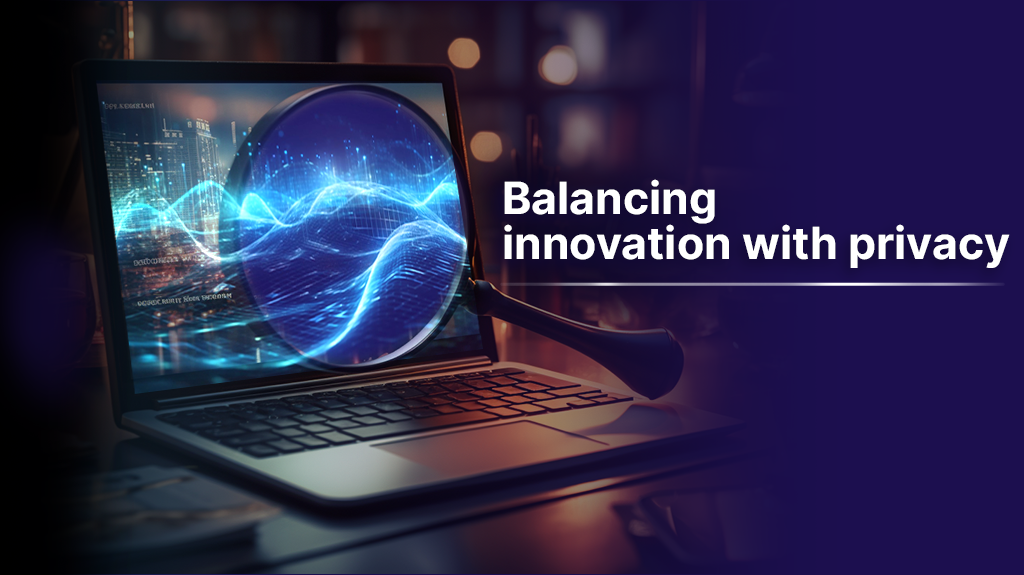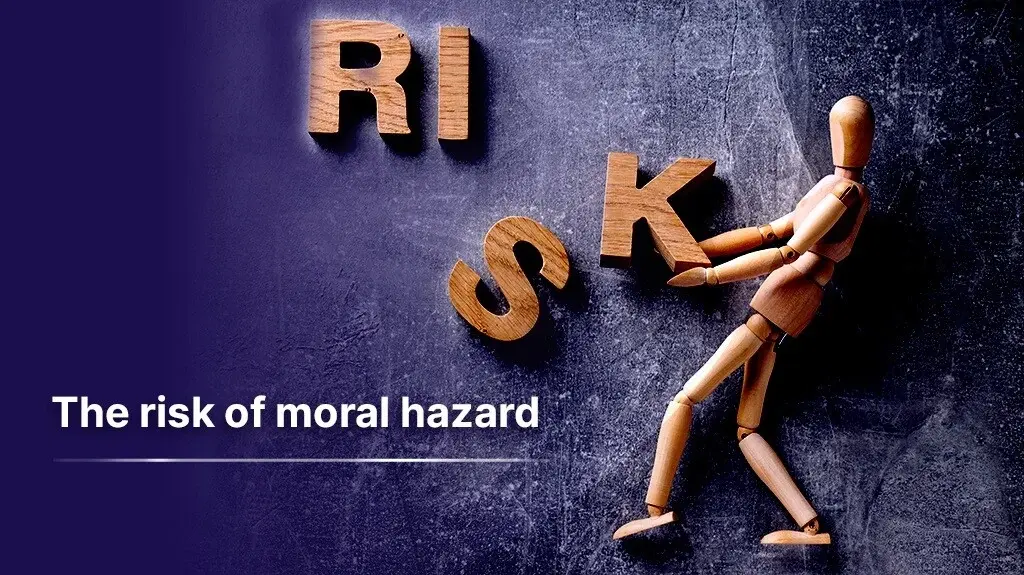Open Source Intelligence (OSINT) is invaluable in preventing insurance fraud. OSINT tools gather and analyze publicly available information from various sources to provide insights that can be used to detect and prevent fraudulent activities in insurance.
However, as with any data collection method, concerns about privacy, security, and ethical considerations in OSINT have arisen. Consumers want assurance that their personal information remains safeguarded, their privacy is respected, and ethical standards are upheld throughout the entire OSINT process. So, organizations using OSINT to prevent insurance fraud should be prepared to address these concerns and questions responsibly and transparently. It'll help instill trust among stakeholders, demonstrate a commitment to ethical practices, and fortify fraud prevention efforts.
This resource serves as a playbook to address the frequently asked questions about OSINT in insurance fraud prevention. It also provides guidance on the extent of public disclosure and how to maintain consistent responses.
1. Does OSINT Violate Privacy?
Response
OSINT doesn't violate privacy if it's conducted ethically and responsibly. OSINT involves gathering publicly available information from sources that include blogs, forums, social media platforms, research papers, and academic journals. When information is already publicly available, it means that individuals have voluntarily shared that information with the public or made it accessible through public platforms. As a result, there is no expectation of privacy for this information, and its collection is generally considered legal and ethical.
However, OSINT can infringe on privacy rights under some circumstances, including:
- When OSINT involves accessing information that isn't publicly available
- When OSINT is used to create detailed profiles of individuals based on pieces of information
- When OSINT is used to gather information from vulnerable populations, such as minors and crime victims.
Public Disclosure
Organizations involved in insurance fraud prevention should have a comprehensive privacy policy available on their websites. It should outline the types of data collected through OSINT, the purpose of the collection, and how the organization ensures compliance with data protection regulations.
Maintaining a Consistent Response
To maintain a consistent response, all employees dealing with OSINT should be trained on privacy laws and the organization's privacy policy. Regular audits of OSINT practices can also help ensure adherence to ethical guidelines.
2. How Does OSINT Help in Insurance Fraud Prevention?
Response
OSINT gathers publicly available information related to claimants, witnesses, and beneficiaries, to corroborate or refute the legitimacy of claims.
For example, suppose a construction worker suffers a head injury and files a fraudulent workers' compensation claim, citing chronic headaches, nausea, and blurry vision as symptoms. The insurance company can use a Special Investigations Unit Software tool to conduct online and social media investigations. The OSINT tool can highlight any text, images, and videos, that can reveal the claimant is exaggerating the extent of their head injuries.
Public Disclosure
Organizations don't have to disclose the specific OSINT techniques they use or give specific examples. They must strike a balance between transparency and safeguarding sensitive investigative methods by taking a generalized approach.
For example, they can publicly state that they employ advanced data analytics and publicly available information to enhance their fraud monitoring prevention efforts. They can also mention the types of publicly available data sources they leverage, such as government records and social media detection. The organization should also assure policyholders and other stakeholders they are transparent about its fraud prevention methods.
Maintaining a Consistent Response
To ensure they maintain a consistent response to the question, the organization should ensure all employees involved in fraud monitoring and prevention understand the role OSINT plays in the investigative process. Organizations can conduct regular training sessions and regular internal communications to ensure all employees are on the same page.
3. How Does the Organization Ensure Data Security in OSINT?
Response
Data security is a top priority for the organization. The organization takes rigorous measures to protect all information obtained through OSINT, maintain the privacy of individuals, and comply with relevant regulations. Some of them include:
- Access controls to ensure only authorized personnel can access Special Investigations Unit Software tools and data.
- Encryption to protect data from unauthorized personnel.
- Secure communication when transmitting data between systems.
- Regular data purging.
- Regular auditing and monitoring to identify security vulnerabilities.
Public Disclosure
The organization should have a publicly available data security policy that outlines the measures taken to secure data collected through OSINT. This policy should detail the steps taken to safeguard sensitive information, prevent unauthorized access, and ensure compliance with data protection laws and regulations.
By having this policy publicly available, the organization demonstrates transparency and commitment to safeguarding data and respecting privacy rights. It helps build trust with customers, partners, and other stakeholders concerned about how their information is handled and protected.

Maintaining a Consistent Response
To maintain a consistent response, it is crucial to regularly educate all employees on data security protocols. Conduct regular security audits and assessments to identify and address any potential vulnerabilities.
4. How Does OSINT Ensure Data Accuracy and Reliability?
Response
OSINT relies on publicly available information, which may not always guarantee complete accuracy or reliability. The organization understands this limitation and takes measures to enhance its accuracy. For example, it employs stringent verification processes to cross-reference data from multiple sources before drawing conclusions. Additionally, the organization's analysts use critical thinking skills to verify information from multiple sources and combine OSINT with other intelligence-fgathering methods to strengthen the assessment.
The organization also constantly updates its methods and tools to enhance the accuracy of the information obtained through OSINT.
Public Disclosure
The organization can have a publicly available statement acknowledging the potential limitations of OSINT data. It should also outline the organization's commitment to rigorous verification procedures to ensure the highest possible accuracy.
Maintaining a Consistent Response
The organization should establish clear guidelines and protocols for verifying OSINT data, and ensure all employees involved in fraud prevention understand them.
5. How Does the Organization Protect Against OSINT Misuse or Unethical Practices?
Response
The organization understands that like any other powerful tool or technology, OSINT can be misused for various unethical practices. To prevent this, the organization has established comprehensive policies and guidelines outlining the acceptable and ethical use of OSINT. It also conducts regular training and awareness programs to educate all individuals involved in OSINT about the potential risks of OSINT misuse and the consequences of unethical practices.
Only authorized personnel can access OSINT tools and data necessary for their job roles. And when analyzing OSINT data related to individuals, the organization seeks informed consent if possible.
Public Disclosure
The organization can publicly state its commitment to responsible and ethical OSINT practices. This commitment can be demonstrated through a publicly available policy on OSINT usage and a clear outline of the consequences for any breach of ethical guidelines.
Maintaining a Consistent Response
To maintain a consistent response when asked this question, all employees should be regularly trained or reminded of the organization's ethical guidelines. Their understanding should also be assessed through training sessions and internal audits.
Enhance Fraud Monitoring with Pilotbird
Organizations using OSINT must be prepared to address these questions because customers are increasingly conscious of how organizations handle their data. Addressing these common questions openly and honestly can demonstrate an organization's commitment to compliance with relevant regulations enhancing its reputation and building trust. Clear communication also mitigates misinformation and could be a competitive advantage in the marketplace.
To further minimize fraud, organizations can pair their OSINT tools with the Pilotbird Fraud Monitoring solution. It uses advanced AI technology to analyze vast amounts of data to detect anomalies and suspicious patterns, helping organizations involved in insurance claims fraud prevention identify potential fraudsters in real-time. It also leverages machine learning algorithms to improve its fraud detection capabilities, adapting to fraudsters' evolving tactics.
Try a Demo of the Pilotbird Fraud Monitoring solution to understand how it can help you.
REFERENCES




Leave a Comment
Your email address will not be published. Required fields are marked *